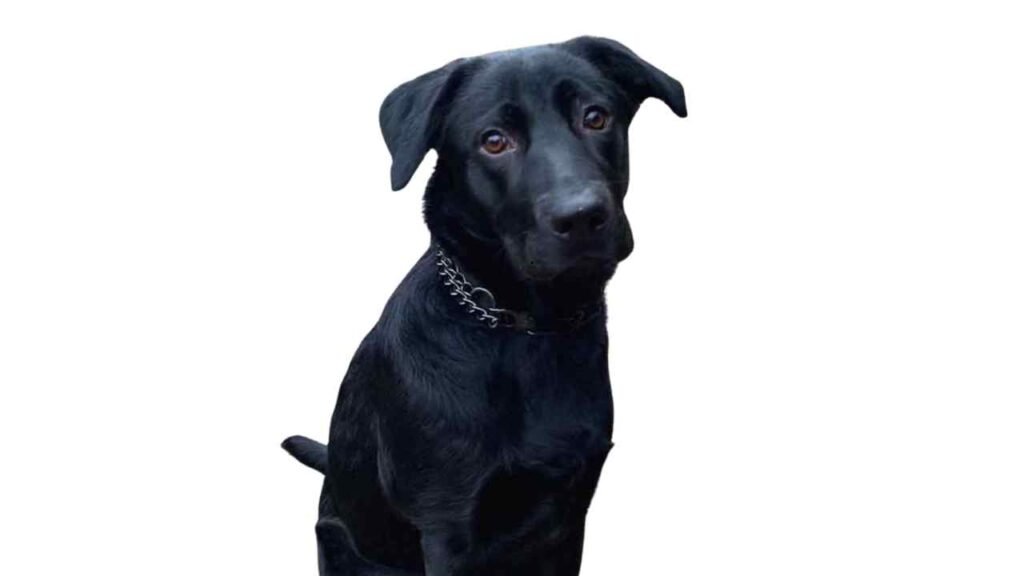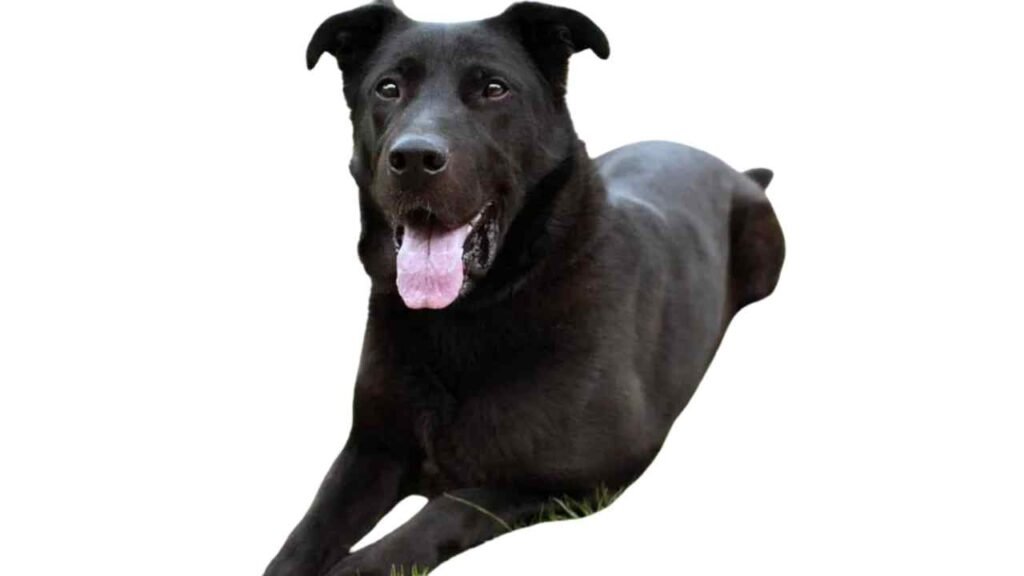Topics Covered in This Blog Post
Did you know? The Sheprador, a hybrid breed between the German Shepherd and the Labrador Retriever, combines the best traits of both parent breeds. Known for their loyalty, intelligence, and versatility, Shepradors excel in a variety of roles, from family pets to working dogs. Whether guarding, herding, or simply providing loving companionship, this breed is as dynamic as it is dependable.
History

🐾 Sheprador History (German Shepherd + Labrador Retriever Mix)
The Sheprador is a designer dog, meaning it’s a mix between two purebred dogs:
- German Shepherd
- Labrador Retriever
This hybrid likely originated in the 1990s or early 2000s, when designer breeds became popular. The goal was to combine the intelligence, loyalty, and working ability of the German Shepherd with the friendly, social nature and energy of the Labrador Retriever.
People wanted a family-friendly working dog—one that could be a great companion, guard dog, and active partner.
🌍 Parent Breed Backgrounds:
- German Shepherd:
- Origin: Germany, late 1800s
- Purpose: Herding, later police/military work
- Traits: Intelligent, obedient, loyal, protective
- Labrador Retriever:
- Origin: Newfoundland, Canada
- Purpose: Fishing assistant, retriever for hunters
- Traits: Friendly, outgoing, eager to please
🐶 Why People Love Shepradors:
- Super smart
- Very trainable
- Great with families
- Good energy for work or play
Appearance

🐕 Sheprador Appearance Overview
| Trait | Description |
|---|---|
| Size | Medium to Large (22–26 inches tall, 50–90 lbs) |
| Build | Athletic, strong, well-proportioned |
| Head | Broad like a Lab, sometimes with the longer snout of a German Shepherd |
| Eyes | Almond-shaped, expressive, usually brown or hazel |
| Ears | Can be floppy like a Lab or stand up like a Shepherd — often a mix (semi-erect) |
| Muzzle | Straight and strong, medium to long length |
| Tail | Long and thick, usually straight or with a slight curve |
| Coat Type | Double coat — short to medium in length, dense |
| Coat Color | Wide variety: black, brown, tan, golden, sable, or mixed patterns |
🧬 Common Look Combos:
- Lab face + Shepherd body
- Shepherd coat pattern + Lab build
- Floppy ears + German Shepherd coloring
They’re usually handsome and balanced-looking dogs, with a confident but friendly vibe.
Personality
🧠🐾 Sheprador Personality Traits
| Trait | Description |
|---|---|
| Loyal | Deeply bonded with their family — they’re protective and devoted. |
| Intelligent | Picks up commands and training quickly (thanks to both parent breeds). |
| Friendly | Usually great with kids, other pets, and strangers (more so if socialized early). |
| Energetic | High energy levels — they love to play, run, and stay active. |
| Affectionate | Very loving — they enjoy cuddles, attention, and being part of family life. |
| Protective | May have guard-dog instincts from the German Shepherd side. |
| Playful | They can be goofy like a Lab but also focused like a Shepherd. |
🐶 What They’re Like at Home:
- Great family dogs — love being around people
- Sometimes clingy — don’t like being left alone for long
- Can be barkers — especially if they’re bored or hear something outside
- Need mental and physical stimulation — puzzles, fetch, training, etc.
🧒👧 With Kids & Pets?
- Usually very gentle and patient with children
- Get along well with other dogs if socialized young
- May try to “herd” small animals (Shepherd instincts)
Grooming
🛁✨ Sheprador Grooming Guide
| Grooming Task | How Often | Details |
|---|---|---|
| Brushing | 2–3 times per week (daily during shedding) | Helps control shedding and keeps coat healthy. Use a slicker brush or undercoat rake. |
| Bathing | Every 6–8 weeks (or when dirty) | Use a gentle dog shampoo. Don’t over-bathe — it can dry out their skin. |
| Shedding | Moderate to heavy | They shed year-round, with heavy “blowouts” in spring and fall. Prepare for fur! |
| Nail Trimming | Every 3–4 weeks | Long nails can cause discomfort or joint issues. Use clippers or a grinder. |
| Ear Cleaning | Every 1–2 weeks | Check for dirt, wax, or signs of infection. Use dog-safe ear cleaner. |
| Teeth Brushing | 2–3 times per week (daily is best) | Prevents bad breath and dental issues. Use dog toothpaste only. |
🐾 Grooming Tips:
- Start grooming early so they get used to it.
- Keep it positive — treats and praise help a lot!
- If they’ve got floppy ears (like a Lab), be extra careful about moisture and infection.
- During shedding seasons, you may need to vacuum daily 😅
Health Issues
🏥🐶 Common Health Issues in Shepradors
| Condition | Description |
|---|---|
| Hip Dysplasia | A common joint issue where the hip doesn’t fit properly into the socket — can cause pain, limping, or arthritis later in life. |
| Elbow Dysplasia | Similar to hip dysplasia but in the front legs. Can lead to lameness or stiffness. |
| Obesity | Labradors love food, so Shepradors are prone to gaining weight — which can make joint issues worse. |
| Degenerative Myelopathy | A progressive spinal disease (from the German Shepherd side) that causes weakness and mobility problems in older dogs. |
| Bloat (Gastric Dilatation-Volvulus) | A serious, life-threatening condition where the stomach twists. Needs emergency care. |
| Ear Infections | Common in dogs with floppy ears — moisture and dirt can build up easily. |
| Allergies | Can be food-related or environmental (like pollen or dust). May cause itching, ear problems, or upset stomach. |
| Eye Issues | Conditions like cataracts or progressive retinal atrophy (PRA) can develop in some dogs. |
🩺 How to Keep a Sheprador Healthy:
- Regular vet checkups
- Healthy diet (portion-controlled!)
- Daily exercise (keeps joints strong and weight in check)
- Joint supplements (like glucosamine) if recommended by your vet
- Routine grooming and ear cleaning
- Watch for changes in movement, appetite, or behavior
💰🐶 Sheprador Price & Costs
🔹 1. Puppy Price (Initial Cost):
- From a breeder: $500–$1,200 USD
- Depends on breeder reputation, location, and whether parents are health-tested.
- Adoption (shelter or rescue): $100–$400 USD
- A great option if you want to save a life and spend less.
🔹 2. First-Year Costs (Setup):
| Expense | Estimated Cost |
|---|---|
| Vaccinations & Vet Visits | $150–$300 |
| Spay/Neuter Surgery | $150–$400 |
| Crate, Bed, Leash, Bowls | $100–$250 |
| Puppy Food & Treats | $300–$600 |
| Toys, Chews, Puzzle Games | $50–$100 |
| Training Classes | $100–$300 |
| Total (First Year) | $800–$2,000+ |
🔹 3. Yearly Ongoing Costs:
| Expense | Annual Cost |
|---|---|
| Food | $400–$800 |
| Routine Vet Care | $200–$400 |
| Flea, Tick, & Worm Prevention | $100–$300 |
| Grooming (if done professionally) | $200–$500 |
| Pet Insurance (optional) | $300–$600 |
| Total Yearly | $1,000–$2,000+ |
💡 Tips to Save:
- DIY grooming at home
- Buy food in bulk
- Pet insurance can help cover surprise vet bills
- Adopt instead of buying from a breeder
🎉🐾 Fun Facts About Shepradors
- They’ve got a “working dog’s heart” and a “goofball’s soul.
- Loyal like a soldier, but also love rolling in mud and chasing butterflies 🦋
- They can learn commands super fast — sometimes after just 2–3 repetitions!
- That makes them great for advanced training, tricks, or even agility courses.
- Their coats can surprise you!
- Some puppies start out one color and change shades as they grow, especially the ones with Shepherd markings.
- Water lovers!
- Thanks to the Lab side, many Shepradors LOVE to swim and splash around — even in puddles. 🐾💦
- They have big “velcro dog” energy.
- They stick to their humans like glue. You go to the kitchen? They’re right behind you. Bathroom? Yup, still there.
- Amazing noses!
- With the Shepherd’s tracking and Lab’s hunting instincts, they’re naturals at scent work or games like “find the treat.”
- They’re emotionally in tune.
- Shepradors often sense your mood — many people say theirs acts extra cuddly when they’re sad or stressed.
- Not an official breed, but they’ve got fan clubs.
- Even though the AKC doesn’t recognize them, Shepradors have a loyal following online and in mixed-breed circles.
Explore More Breeds and Conduct Further Research
